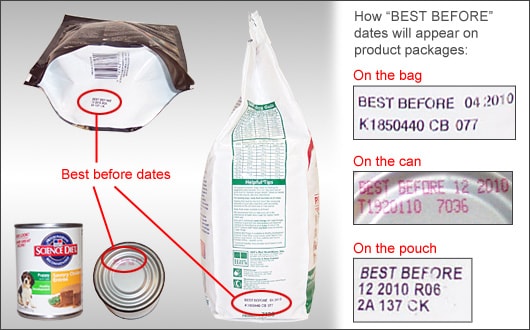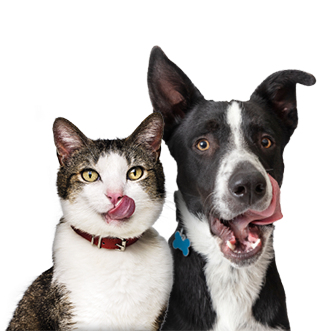
-
Find the right food for your pet
Take this quiz to see which food may be the best for your furry friend.
Find the right food for your pet
Take this quiz to see which food may be the best for your furry friend.
Featured products
 Adult Healthy Cuisine Roasted Chicken, Carrots & Spinach Stew Dog Food
Adult Healthy Cuisine Roasted Chicken, Carrots & Spinach Stew Dog FoodDelicious roasted chicken paired with tender vegetables in a succulent stew
Shop Now Adult 7+ Perfect Digestion Chicken, Whole Oats & Brown Rice Recipe Dog Food
Adult 7+ Perfect Digestion Chicken, Whole Oats & Brown Rice Recipe Dog FoodScience Diet's breakthrough nutrition supports ultimate digestive well-being & healthy microbiome for dogs age 7+
Shop Now Small & Mini Savory Stew with Chicken & Vegetables Dog Food
Small & Mini Savory Stew with Chicken & Vegetables Dog FoodA delicious complement to the nutrition of Science Diet Small & Mini 7+ dog food
Shop NowFeatured products
 Adult 7+ Senior Vitality Chicken & Vegetable Stew Cat Food
Adult 7+ Senior Vitality Chicken & Vegetable Stew Cat FoodImproves Everyday Ability to Get Up & Go
Shop Now Adult 7+ Tender Tuna Dinner Cat Food
Adult 7+ Tender Tuna Dinner Cat FoodWith delicious chunks in a decadent gravy
Shop Now Adult Savory Entrée Can Variety Pack Cat Food
Adult Savory Entrée Can Variety Pack Cat FoodPrecisely balanced nutrition with the delicious taste of savory minced chicken to help fuel the energy needs of cats during the prime of their life
Shop Now -
Dog
- Dog Tips & Articles
-
Health Category
- Weight
- Food & Environmental Sensitivities
- Urinary
- Digestive
- Joint
- Kidney
-
Life Stage
- Puppy Nutrition
- Adult Nutrition
- Senior Nutrition
Cat
- Cat Tips & Articles
-
Health Category
- Weight
- Skin & Food Sensitivities
- Urinary
- Digestive
- Kidney
-
Life Stage
- Kitten Nutrition
- Adult Nutrition
Featured articles
 Does My Pet Hate Me?
Does My Pet Hate Me?Learn tips for bonding with your pet if you've ever thought, 'My dog doesn't like me, or 'Why do I have a standoffish cat?'
Read More Do Dogs and Cats have Belly Buttons?
Do Dogs and Cats have Belly Buttons?Learn whether cats & dogs have belly buttons like humans, what the function is, and if there are any health concerns associated with it.
Read More Why Are Dogs and Cats So Cute?
Why Are Dogs and Cats So Cute?If waggy puppy dog tails and furry kitten yawns make you swoon, you're not alone. Why are cats so cute? And, dogs too! Let's find out!
Read More -


Where you store your cat and dog food can make a big difference in the quality and freshness once it is opened. Here are some common questions and recommendations for optimal storage for all of Hill’s dry and canned cat and dog food.
How should I store my cat or dog’s dry food?
Bags of dry Science Diet and Prescription Diet cat or dog food should be stored in a cool, dry environment under 100°F (38°C)? This is to prevent destruction of vitamins and oxidation of fats leading to rancidity. Pet foods will retain their best flavor if stored in the original bag, which provides a fat barrier. Storage at temperatures of 120°F (48°C) for more than 48 hours can accelerate the normal degradation or destruction of the vitamins.
Can I store my cat or dog’s canned food in the garage?
Storing your cat or dog’s food in an uncontrolled environment - such as a garage or outdoors – is not recommended.
- For dry cat and dog food
- Store the food in a cool and dry environment. It is best to store the bag off the floor to reduce potential infestation.
- For canned cat and dog food
- Prior to opening, store cans in a place where the temperature is between 50-100°F. Do not freeze canned cat or dog food as it can change the texture and taste of the food.
Should I use a plastic storage container for my cat or dog’s food?
Many cat and dog owners like to transfer their cat or dog’s dry food from the bag to another container. Studies by Hill's® packaging engineers have shown that storage in a variety of plastic containers (garbage cans, zip-to-close bags, garbage or, kitchen bags, rubber/plastic containers, plastic pails, etc.) may impart an odor and taste to dry pet foods that adversely effects the taste of the food. Zip-to-close bags, garbage and similar bags will also not prevent fat from accumulating on the outside of the bag. Storage in clean metal containers (small metal tins, metal garbage cans, etc.) is acceptable. If you do prefer using a storage container, keep the food in the original bag within the container to create an ideal storage location.How do I store open cans of cat or dog food?
Opened cans of Science Diet or Prescription Diet cat or dog food should be stored in the fridge to retain moisture, minimize exposure to air and reduce transfer of odors to other food. The best way to store opened cans of cat or dog food is to use a plastic pet food lid that fits the top of the can to prevent moisture loss and transfer of odors. If a plastic lid is not available, plastic wrap also provides a very good moisture, air and odor barrier. Zip-to-close bags provide good moisture barriers but do not provide good oxygen and odor barriers.


Tasty Tips
Young pets may need several visits in their first year for vaccinations. Adult pets generally benefit from annual check-ups, while senior or special-needs pets might require more frequent visits.
Sometimes my pet doesn’t eat everything. How long is my cat or dog’s dry food good once it’s in the bowl? How long are the cans good once opened?
- For dry cat and dog food
- Dry food can be left in your cat or dog’s bowl indefinitely if the bowl is kept in an area that is cool, dry, out of direct sunlight and not subject to contamination by insects and vermin. However, we recommend that your cat or dog’s food bowl is washed and filled fresh each day.
- For canned cat and dog food
- Your pet’s bowl should be emptied of moist or canned food not eaten by your cat or dog within 4 hours if the ambient temperature is above 50°F. Opened cans should be stored in the fridge, at temperatures between 40-45°F, for a maximum of 5-7 days. Any cat or dog food remaining after that time should be thrown out.
How can I tell if an unopened can or bag of cat or dog food is still good? For dry cat and dog food
- The datecode on our plastic bags is located on the left gusset, near the 4 or 5-digit SKU number, toward the bottom of the bag. The datecode on our medium and large bags will be located on the top of the bag, generally the front flap. The example below shows that this bag of pet food is best before April 2010. After April 1, 2010, the unopened bag of pet food should be discarded.
For canned cat and dog food
- Please refer to the best before date stamped on the bottom of all canned products. The example below shows that this can of pet food is best before December 2010. After December 1, 2010, the unopened can of pet food should be discarded.

Remember, what you feed your cat or dog is critical to their health but where you store your cat and dog food can also make a big difference to your furry loved ones. Keep these tips in mind for optimal pet food storage.


One of our staff authors prepared this article for you
Related products

Supports energy level and beautiful fur in mature cats

Improves Everyday Ability to Get Up & Go

Precisely balanced nutrition with the delicious taste of savory minced chicken to help fuel the energy needs of cats during the prime of their life

With delicious chunks in a decadent gravy
Related articles

Learn tips for bonding with your pet if you've ever thought, 'My dog doesn't like me, or 'Why do I have a standoffish cat?'

If waggy puppy dog tails and furry kitten yawns make you swoon, you're not alone. Why are cats so cute? And, dogs too! Let's find out!

Discover how your pets might be impacted by the loss of another. Learn how to recognize their signs of grieving & how to help them cope with their loss.

Learn whether cats & dogs have belly buttons like humans, what the function is, and if there are any health concerns associated with it.

Put your pet on a diet without them knowing
Our low calorie formula helps you control your pet's weight. It's packed with high-quality protein for building lean muscles, and made with purposeful ingredients for a flavorful, nutritious meal. Clinically proven antioxidants, Vitamin C+E, help promote a healthy immune system.
Put your pet on a diet without them knowing
Our low calorie formula helps you control your pet's weight. It's packed with high-quality protein for building lean muscles, and made with purposeful ingredients for a flavorful, nutritious meal. Clinically proven antioxidants, Vitamin C+E, help promote a healthy immune system.

